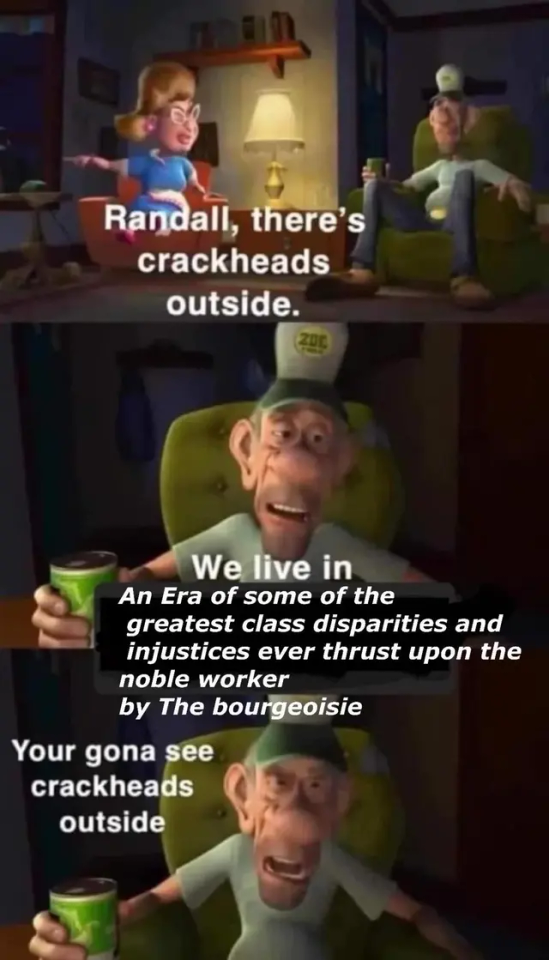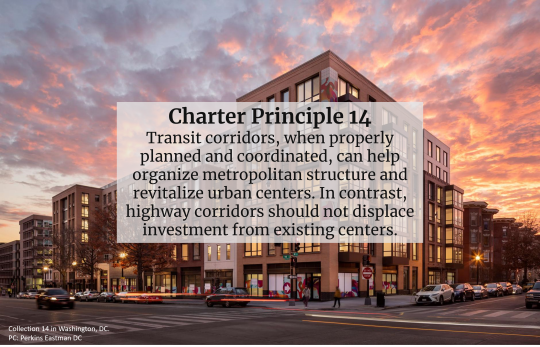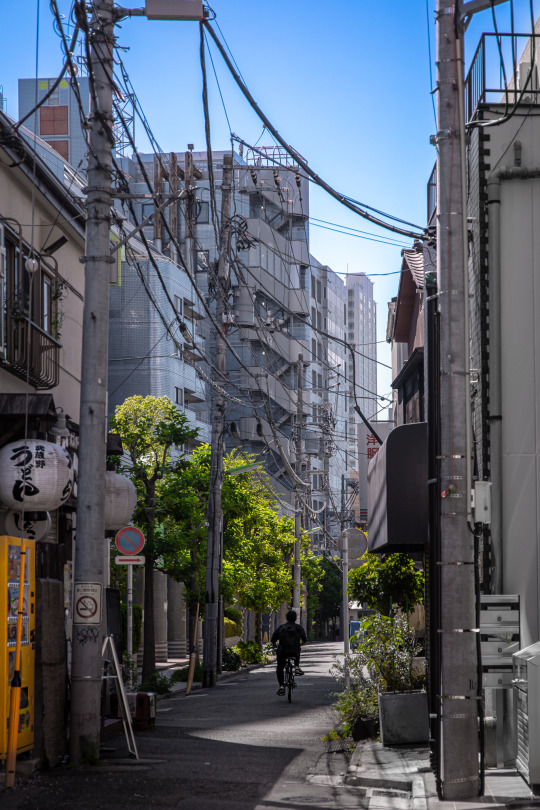#urban centers
Photo

Cinematic Photos of Nocturnal Life in Urban Centers Across Asia and Europe
Photographer Liam Wong, who is known for his cinematic photos of Tokyo at night, is back with a new collection of urban images for his book After Dark. A sort of sequel to his popular monograph TO:KY:OO, After Dark sees Wong cast a wider net as he explores other urban centers at night. This collection of photographs delves into the night atmosphere of other Asian cities like Osaka, Seoul, and Hong Kong, but also touches on Europe with visits to London, Paris, and Rome.



#liam wong#photographer#cinematic#nocturnal life#night photography#urban centers#photographs#asia#europe#after dark#photo series
8 notes
·
View notes
Text

#such is life#it really does#me when I'm in an urban center#going city mode#196#r/196#rule#apartmentofawesome
40K notes
·
View notes
Text
The Neighborhood, The District, and The Corridor - Charter Principle 14

#new urbanism#urbanism#design#urban design#walkability#cities#walkable#charter#transit#corridor#urban centers
0 notes
Text
#Bullet trains#high-speed#Japan's freight sector#perishable goods#fresh fruits#live seafood#high-speed rail tracks#local communities#food producers#railway operators#urban centers#COVID-19 pandemic#innovative solutions#seat sales#freight services#Hayabusa No. 72 train#Mutsu Bay#apple pies#cargo capacity#truck driver shortage#working hours#JR East#Hakobyun#seafood#vegetables#flowers#fresh sashimi#Yobuko squid#Karatsu#Saga Prefecture
1 note
·
View note
Text

KYOTO, JAPAN
#Kyoto#京都#Japan#日本#kyoto vacation#kyoto prefecture#kyoto trip#kyoto travel#japan vacation#japan travel#japan photos#japan trip#japanese#architecture#urban#urban photography#city#city center#city life#street#street photography#travel#trip#early morning#photography#photographers on tumblr
690 notes
·
View notes
Text
CRITIQUE OF PAROCHIAL FEDERALISM, IV
The last posting ended with the following,
By addressing these concerns [lack of viable local governance] … one gets at a very fundamental aspect of a parochial view of federalism as that term suggests one should have. That would be a parochialism based on local partnerships across the nation in which a partner comes face-to-face with other partners.
This is not so much a call for the central, federal government not to address national concerns, but to encourage local citizens to make their local governance and governments proactive entities ready, willing, and able to address the array of challenges citizens face. That goes from truly local concerns to such global worries as climate change. Each level of government has not only a relevant role, but a vital one as well.
And before leaving this local concern, one related problem should be mentioned. Local communities are evermore becoming single-political units of advocacy. That is, like minded people are to greater levels living near each other. Liberals live in liberal neighborhoods or sections of towns, and conservatives also live close to like minded people. This has political consequences.
For example, when it comes to districting – or redistricting – Congressional or legislative districts, gerrymandered map-drawings (maps that show how the districts are designated) insure that one party dominates in each of the districts. This makes general elections near meaningless as the choosing of representatives shifts over to primary contests.[1]
Add to that the fact that primary elections draw the attention of only the more partisan voters and one can see that many elections do not fulfill their intended purpose. Ideally, elections should be the time when regular citizens meaningfully involve themselves with others to determine who should represent them in developing governmental policy, yet that is, to ever increasing frequency, not happening. By this development becoming common, it discards how democracy in a republic is supposed to work.
At the heart of this concern is how unfederated these monocultural arrangements – which they usually turn out to be – are. Not only that, but these states of affairs are further institutionalized by the practice of gerrymandering those representative districts. Here’s an idea: what if a constitutional amendment was proposed and ratified in which it stated the following:
· One, since monopolistically determined representative districts undermine the federation of a citizenry, and,
· Two, the US Constitution is a federalist arrangement,
· Therefore, redistricting shall honor, as much as possible, the principle of diversity as expressed by the allocation of voters within representative districts as closely as possible to the diversity of the state’s electorate as expressed in the last election. For example, if the state’s election returns indicate 51% voted for Party X and 49% for Party Y, and then based on information garnered from voter registration distribution, each district will reflect this distribution as closely as possible. Independent registered voters would be considered neutral in this allocation and randomly assigned according to residential addresses.
· Claims that this mandate is not being met shall be subject to civil suits in which the courts will determine if a proposed districting plan shall be enforced.
· This provision should not be considered an obstacle to any third-entity solutions, such as generated by commissions to set up to design districting maps, but instead serve as a standard such solutions need to meet.
As is probably obvious, this blogger is not a constitutional lawyer or scholar, but he feels his intent is communicated by the above bulleted list.
In many states, given the popularity of one party over another, this “reform” would have no practical effect, but in those areas or states in which there is sufficient diversity, it could have an enormous effect. Here is what Eilperin reported earlier in this century:
Political scientists and good government advocates have fretted for years about House incumbents’ reelection advantage. Redistricting has only exacerbated an already disturbing trend. In [recent] … congressional elections, only thirteen seats switched party control, and seven incumbents lost in the general election … As University of Pennsylvania Law School Professor Nathaniel Persily wrote, “current rates of House turnover may equal historic rates of turnover in the Politburo [the policy making body of the old Soviet Union].[2]
The above listed provisions – or some such constitutional change – would encourage people of different ethnic and political standing to start talking to each other, start depending on each other, and perhaps begin interacting more often with each other.
There is evidence that, in general, this is not so popular,[3] but it is a central attribute of federalist thought that citizens should strive to become federated with each other. To achieve the necessary relationships so that they do so, people need to interact, especially politically. With the above amendment or some such provision, the belief here is that a stage would be set for such interactions.
So much for that concern; now back to critiquing the parochial/traditional federalist view. And what follows is the next element of this critique. This element, it turns out, is somewhat related to what has just been stated. That is, another shortcoming in the use of traditional federalism, particularly given the heterogeneity of modern societies and especially in the US, is that it takes no account of ethnic diversity; at best, it tolerates it.
While this nation has a history of diverse European populations, with the addition of mostly the African slave population in its early days, most communities were segregated, and in the ensuing years this included whole states being established by religious/national groupings.[4] But as time went by, communities began to intersperse, and that trend has grown extensively to the present day, particularly in urban centers.
The nation’s larger urban areas, especially, are cauldrons of diversity. There, one finds zones of intermingling peoples. Here is how a recent review of diversity states the situation:
Nearly all of the nation’s largest cities have at least one neighborhood that meets our definition as being both racially and ethnically diverse and mixed income. Three large cities – New York, Los Angeles and San Francisco [–] account for nearly half such neighborhoods, but some smaller cities also rank high in the fraction of their population living in these diverse, mixed income neighborhoods.[5]
This runs counter to what this posting reports above – the prevalence of segregated areas. That means these cities run counter to what seems to be occurring in the rest of the country.
And in these “unusual” areas – the urban areas – there are schools with high levels of diversity. The concern here is to merely state that such a distinguishing and influential factor should be accounted for when districting and other policies are being considered. Surely a construct that would set the priorities of what governmental elements should be studied – as parochial/traditional federalism potentially sets out to do – and what issues will be analyzed should have a component that addresses diversity within the population.
Not only does parochial/federalism tend to ignore these factors, but it also tends to minimize diversity, and, by its sense of priority, somehow attributes an insufficient degree of legitimacy to it and fails to entertain the sort of solutions that this posting offers – be they amateurish. So, as with the state of the nation’s politics running in two opposing directions – known as polarization – one gets a sense of how that has come about.
On the one hand, there is segregated, representative districting and on the other hand, the higher levels of desegregated urban centers. Parochial federalism provides Americans with little to no guidance about how they should address this current day political landscape other than claim that they should federate with each other. Unfortunately, the times call for more guidance.
This critique, it turns out, needs at least one more posting before it is completed. Two more issues should be addressed. They are related to the use of historical documents and a definitional issue – that being the definition of community. And last, a summary statement should be added. The next posting, hopefully, will touch all of these bases.[6]
[1] Juliet Eilperin, Fight Club Politics: How Partisanship Is Poisoning the House of Representatives (Lanham, MD: Rowman and Littlefield, 2007). While a bit dated, nothing in ensuing reports in the news seems to suggest this situation has been rectified; as a matter of fact, things have gotten worse.
[2] Ibid., 112,
[3] Ibid. This lack of popularity seemingly due to people, as conditions now stand, finding this form of interaction unattractive – it strikes many as having to deal with “them” – the other.
[4] See, for example, Tom Gjelten, “White Supremacist Ideas Have Historical Roots in U.S. Christianity.” NPR (July 1, 2020), accessed July 17, 2022, https://www.npr.org/2020/07/01/883115867/white-supremacist-ideas-have-historical-roots-in-u-s-christianity AND Mark Carnes and John A. Garraty, The American Nation: A History of the United States (Boston, MA: Pearson, 2015).
[5] Joe Cortright, “America’s Most Diverse Mixed Income Neighborhoods,” City Reports (June 18, 2018), accessed July 17, 2022, https://cityobservatory.org/admin/ .
[6] Afterall, tonight is MLB’s All-Star Game.
0 notes
Text
Painted Knees
Painted Knees
#MondayBlogs
#HaikuPoetry
Painted Knees
too many live their lives
denied knowing the green grass
stains the dreams of youth
This is my entry for this weeks Haiku Poetry Challenge GRASS and Stain.
There are details in the prompt on how to write a Haiku.
Enter your email address to subscribe to this blog and receive notifications of new posts by email.
Email Address:
Subscribe
© 2014-2022- Ronovan Hester Copyright…
View On WordPress
#asphalt jungle#Childhood#Childhood memories#future world#Haiku#Homeless#Life#Poverty#Syllable poetry#third world nations#urban centers
0 notes
Text
There’s a specific quirk that makes reading urban fantasy really annoying for me, and it’s that without fail the main character is constantly guzzling coffee. They’re grumpy without it, robbed of it for laughs, they only have coffee for breakfast, they seem like they’d likely have 9/10 coffee in their bloodstream.
I’m caffeine intolerant and I’ve never been able to drink coffee, and this holy pedestal it gets placed on is bizarre to me. It’s obviously relatable or else so many authors wouldn’t do it but from the outside looking in all these characters are just grappling with a socially acceptable addiction.
#ramblies#when my betrothed worked at a coffee shop they’d just smell unpleasantly bitter when they got home#I didn’t mind it in Legends and Lattes because the premise is entirely coffee centered#but every urban fantasy detective is trying to assimilate it into their veins and it’s just like… are you okay?
77 notes
·
View notes
Text

RINO LEVI ARQUITETOS ASSOCIADOS
FIESP BUILDING, 1979
São Paulo, Brazil
Image © Edifício Fiesp
#architecture#design#architect#art#designer#archdaily#artwork#photography#juliaknz#form#brazil#cultural center#sao paulo#high rise#building#public building#mixed use#urban#urban context#planning#photograph#RINO LEVI ARQUITETOS ASSOCIADOS
106 notes
·
View notes
Text

Twin Towers, World Trade Center - New York City by Andreas Komodromos
#world trade center#manhattan#urban#travel#new york city#new york#cityscape#city#nyc#nyandreas#architecture#twin towers#9/11#september 11#skyscraper#skyline#usa#tumblrphoto#nycphotographer
188 notes
·
View notes
Photo

Traveling Photographer’s Love Letter to Kyoto Highlights Its Technicolor Glow
Photographer Xavier Portela is known for capturing the energy of cities at night. Focusing on the neon-soaked streets of vibrant urban centers, Portela’s Glow series is a surreal look at life in the city. And now, after Tokyo and Kobe, Portela is back in Japan. This time, he’s ventured to Kyoto. Considered the cultural heart of Japan, the former capital is known for its wealth of temples and shrines. But, as Portela’s photos demonstrate, the city is also distinctly modern.



#xavier portela#photographer#travel#kyoto#japan#technicolor glow#night photography#street photography#culture#urban centers
1 note
·
View note
Text

The first architectural rendering of the future Rockefeller Center (then called Metropolitan or Radio City) was revealed on March 6, 1931.
The press was not kind. "The crux of the problem is that Radio City is ugly," wrote the Herald Tribune. "The exterior is hideously dull and ugly." The Times referred to its "architectural fallacies and horrors." The central feature of the design, a circular structure to house Chase National Bank, was called an "oil drum."
The architects were sent back to the drawing board, with Raymond Hood now advising. He opened up the campus, which had had a lot of buildings crammed into a small space, replaced the brick with limestone, and scrapped the oil drum. He also added rooftop gardens to several buildings and placed a fountain in the sunken plaza.
Photo: istoriadelosrascacielosdenuevayork
#vintage New York#1930s#Rockefeller Center#unbuilt New York#architectural rendering#design#urban planning#Raymond Hood#March 6#6 March#architecture
56 notes
·
View notes
Photo

World Trade Center Subway Stairs view of Freedom Tower
#Freedom Tower#Subway#World Trade Center#Stairs#New York City#new york#newyork#New-York#nyc#NY#Manhattan#urban#city#USA#United States#buildings#travel#journey#outdoors#street#architecture
348 notes
·
View notes
Text

Alexander Calder, Stabile, Chicago Government Center, Chicago, Illinois, 1969
#art#architecture#design#public art#public space#chicago#Alexander calder#stabile#Chicago government center#urbanism
977 notes
·
View notes
Text

TOKYO, JAPAN
#Tokyo#東京#Japan#日本#tokyo travel#tokyo trip#tokyo tour#japan vacation#japan travel#japan photos#japan trip#japanese#colorful#architecture#urban#urban life#urban photography#street#street photography#city#city center#city life#artists on tumblr#photography#photographers on tumblr
409 notes
·
View notes
Text



Views from the top of One World Trade Center
22 notes
·
View notes